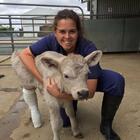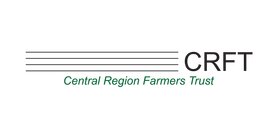Report Synopsis
Cattle health schemes: what does success look like?
At a time when the livestock industry is under huge pressure to be sustainable and efficient, preventing disease is of critical importance to ensure that cattle are as healthy and productive as possible.
There are a wide variety of cattle health schemes used throughout the world to prevent, control and eradicate disease in beef and dairy operations, and to identify herd disease status which have been applied with varying degrees of success. The UK is no exception; there are many different schemes and yet several preventable cattle diseases remain endemic. This study was undertaken to explore cattle health schemes in different countries and in different livestock systems. It aims to identify the key ingredients which underpin success and could be applied to the UK situation.
Cattle health schemes should not be relied upon as the only means by which to determine herd health status. Success in controlling livestock health has also been achieved where formal programmes are lacking. A cohesive strategy is required in order to achieve disease control nationally but good status of health and welfare can be achieved at a farm level in the absence of wider support. Ensuring that the basics of animal health – suitable environment, adequate nutrition, the right animals for the system and preventative disease measures – are done well goes a long way towards reducing the impact of cattle disease.
Controlling disease in a herd is only one of many pressures faced by the farming industry. Understanding the cost-benefits of cattle health scheme participation as part of a bigger picture can help to identify what ‘success’ looks like from different stakeholder’s perspectives; there are financial, commercial, personal, social and environmental factors involved in making decisions around animal health. Incorporating them into decision-making around cattle health schemes can help to embed animal health into holistic solutions for farm businesses.
Frameworks can help to provide roadmaps for controlling disease but an adaptive, flexible process will help to facilitate successful outcomes; ‘one size’ does not always ‘fit all’ and excessive bureaucracy can be counter-productive. Regular communication can help to expedite success and collaboration is aided where partnerships exist: this is more readily achieved in smaller, more consolidated cattle industries, so collaboration towards shared goals is even more essential for the UK.
Technology and data are creating solutions for animal health at a rapid pace and cattle health schemes will need to evolve to reflect this. They also provide excellent opportunities to reduce administrative burdens as well as both improve and demonstrate improvements to cattle health, building transparency and trust in protein production which is needed for farming’s societal acceptance and public approval.
We are privileged to have the resources and expertise to implement cattle health schemes in the UK, and to reap the benefits. The ingredients for success are available to us, but we cannot rest on our laurels. A concerted effort is needed to push forward in implementing robust, successful cattle health schemes as a key strategic driver for achieving some of the world’s best cattle health and welfare and profitable farming businesses.
Liz Cresswell

Central Region Farmers Trust

